THE SPEED OF TRUST
The speed of trust is coined out of Mr. Covey’s experiences he has seen over the years in leadership and while working with companies. It focuses on helping individuals in building and infusing trust in and around them. The Speed of Trust starts off with the “Economies of trust”. The author uses this formula to demonstrate his point: When trust is low, speed goes down and cost goes up; when trust is high, speed goes up and cost goes down. The author equates trust to paying taxes. As a taxpayer, we know a certain amount of money must be paid to IRS annually as a tax but when it comes to trust or lack of trust, we are paying a tax and we may not be aware of it.
The other equation the author offers is the product of strategy and execution.
Strategy * Execution = Results
But then he goes on to say the product of strategy and Execution and Trust gives Results
(Strategy * Execution)*Trust = Result
Trust is a multiplier. You can have a good strategy and a great execution plan but without trust, the project can get derailed. Trust is a key ingredient for all relationships and it’s one of the most powerful forms of motivation and inspiration. People want to be trusted. The author goes further to break down trust into five waves:
- Self-trust, which deals with confidence we have in ourselves, in our ability to set and achieve goals, keep a commitment, to walk the talk and also with our ability to inspire trust in others; a person who is worthy of trust.
- Relationship Trust, which is about how to establish and increase trust with others, to enhance relationships and achieve a better result.
- Organizational trust, deals with how leaders can generate trust in all kinds of organizations like businesses, not for profit organizations, etc.
- Market trust, is about reputation, whereby everyone clearly understands the impact of trust; and lastly,
- Societal Trust is about contribution and focuses on creating value for others and society at large.
The first wave is about the four dimension of credibility. These are the foundational elements that make people believable to themselves and to others. They are: integrity, intent, capabilities, and result.
The second wave is about the thirteen different ways leaders behave. Covey believes that these behaviors are common to high trust leaders and individuals worldwide. These enhance one’s ability to establish trust in all relationships. The first five flow from character, the second five flow from competence while the last three are the combination of both character and competence.
These 13 behavior characteristics are:
- Talk Straight: Be honest and tell the truth. Let people know where they stand and use simple English while communicating.
- Demonstrate Respect: Demonstrate respect, don’t fake caring and don’t attempt to be efficient with people.
- Create Transparency: create transparency by telling the truth, don’t have hidden agendas or information, get real, be genuine, open and authentic.
- Right Wrongs: Make things right when you are wrong, don’t cover things up. Demonstrate humility and apologize quickly.
- Show Loyalty: you show loyalty by acknowledging the contributions of others and giving credit freely. Don’t bad mouth or disclose others private matters.
- Deliver Result: this is done by getting the right things done. Make things happen, don’t over-promise or underdeliver. Always be on time and within budget.
- Get Better: Don’t assume today’s skill will be sufficient for tomorrow’s challenge. Constantly improve your capabilities and don’t consider yourself above feedbacks.
- Confront Reality: Lead out courageously in conversation, address the tough issues directly. Don’t bury your head in the sand instead take issues head-on.
- Clarify Expectation: Disclose and reveal expectation, discuss them validate them, renegotiate them. Done violate expectation or assume that expectations are cleared or shared.
- Practice Accountability: Hold yourself accountable, hold others accountable. Take responsibility for results. Don’t avoid or shirk responsibility. Don’t blame others or point fingers when things go wrong.
- Listen First: Listen before you speak. Understand, diagnose and listen with your ears and eyes and heart. Find out the most important behaviors are to the people you’re working with. Don’t assume you know what matters to others. Don’t presume you have all of the answers or all the questions.
- Keep Commitment: Say what you’re going to do or do what you’re going to do.
- Extend Trust: Extend trust abundantly to those who have earned your trust. Extend trust conditionally to those who are earning your trust. Don’t withhold trust because there is risk involved.
The speed of trust affirms that to inspire trust is to create the foundation on which truly successful organization/relationships stand. This ability is the prime differentiator between managing and leading.
THE BIG THREE – KEY POINTS
Key point #1: Trust can be efficiently taught and learned, and it can become a leverageable strategic advantage
Key point #2: Trust is one of the most powerful forms of motivation and inspiration.
Key point #3: Trust is a function of character and competence
One Last Thing
“None of us knows what might happen even the next minute, yet still we go forward. Because we trust. Because we have Faith.”
― Paulo Coelho
